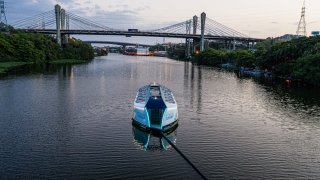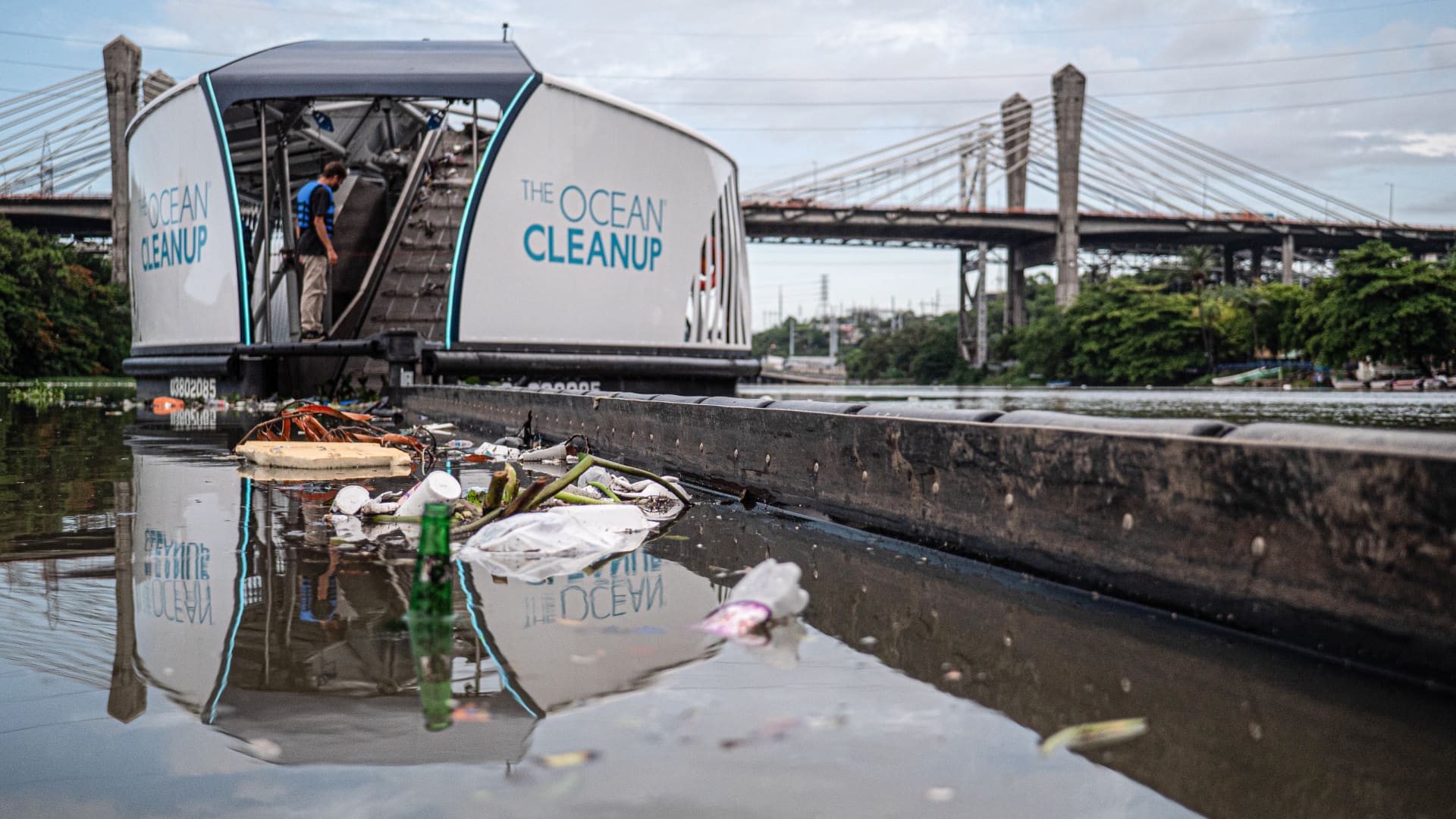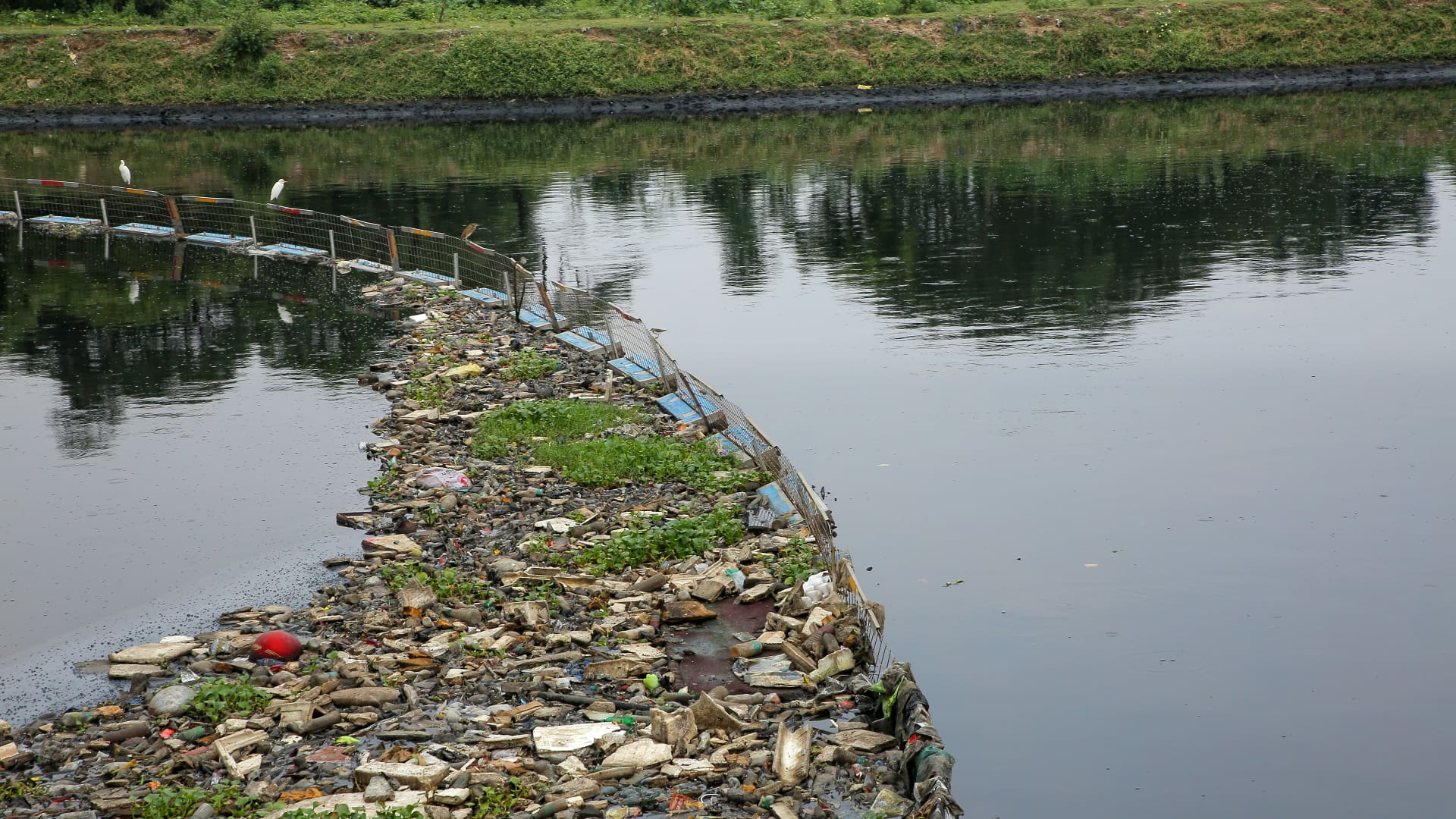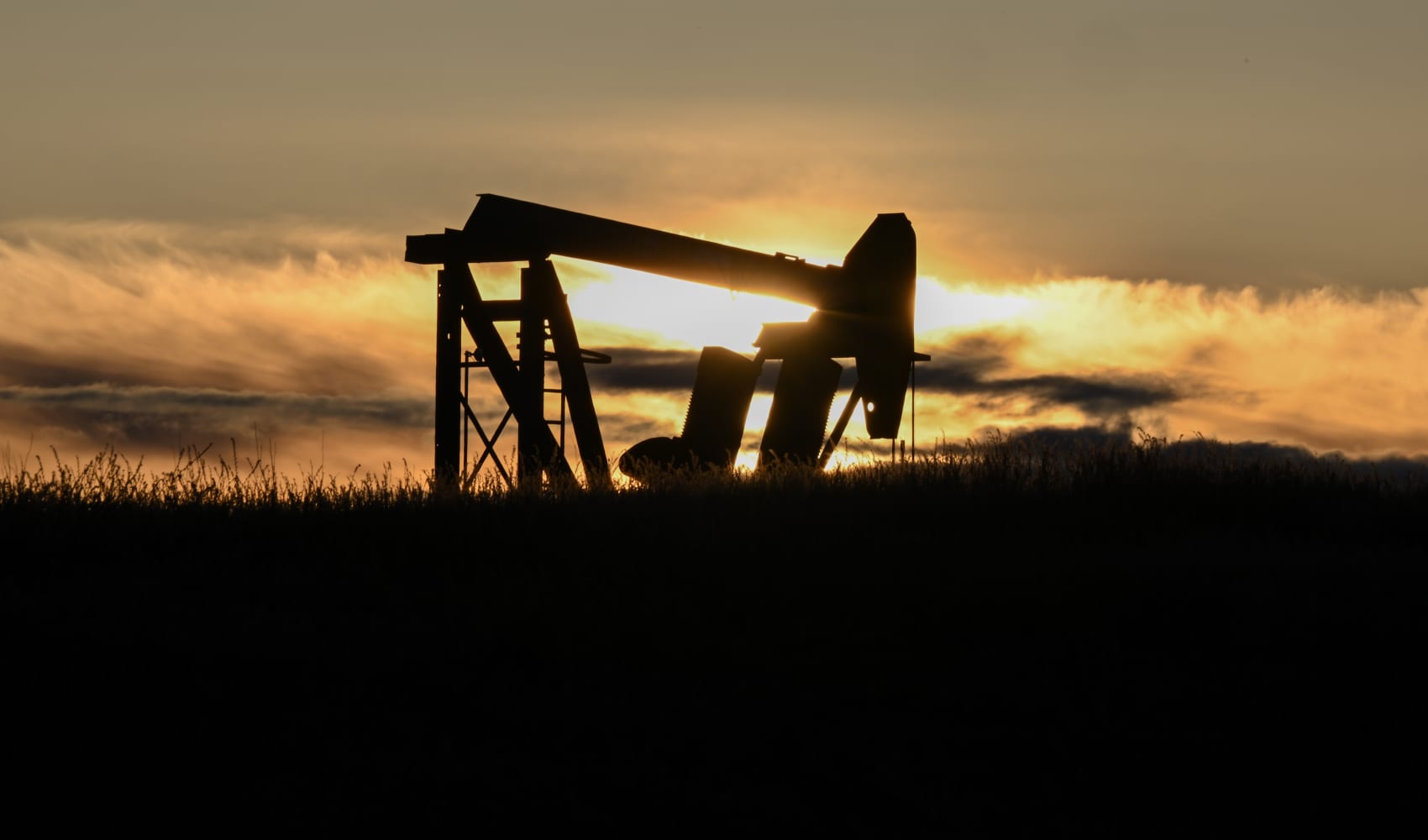
Every year, millions of tons of plastic waste pour into the ocean, much of coming from about 1,000 hyper-polluting rivers. And with overall waste generation poised to increase over 75% by 2050, the problem is only set to worsen.
Companies around the world have turned their attention to the problem of river waste, building various barriers, fences, and wheels that help to contain and remove trash as it flows downstream.
The approaches range from trash-scooping solar-powered barges to stainless steel fences, and different rivers will necessitate different methods.
Here's how three companies, Clearwater Mills, The Ocean Cleanup, and AlphaMERS are approaching the problem.
Get DFW local news, weather forecasts and entertainment stories to your inbox. Sign up for NBC DFW newsletters.
Clearwater Mills' Trash Wheels
Baltimore's googly-eyed trash wheels, the first of which debuted in 2014, are one of the original efforts to address river waste. Built by Clearwater Mills, the company's founder John Kellett was inspired to design the wheels after years of seeing trash pouring into the Baltimore Harbor after big storms.
"We have Mr. Trash Wheel, Captain Trash Wheel, Professor Trash Wheel and Gwynnda the Good Wheel of the West here in Baltimore," Kellett said, citing the names of the anthropomorphized wheels which have become minor social media celebrities in the city.

Here's how they work: Containment booms are set up in a V-shape across the river, with rubber skirts that extend about two feet below the water's surface. This catches trash floating downriver and funnels it towards the "mouth" of the rotating water wheel, which is powered by the river's current and attached solar panels. The wheel's rotation powers a conveyor belt that lifts trash and debris out of the river and deposits it into a dumpster. Attached cameras allow the team to monitor how full the dumpsters are.
Money Report
"And when that dumpster's full, we have another floating barge that we bring with an empty dumpster. Take the full one out, slide the empty one in and keep picking up the trash," Kellett said.
The four wheels have picked up a total of about 2,000 tons of trash and debris. Sticks and leaves make up the bulk of this weight since plastic is so light, but the haul overall includes about 1.5 million plastic bottles, 1.4 million foam containers and 12.6 million cigarette butts. Everything is then incinerated in a waste-to-energy facility.
Additional trash wheels are planned for Texas, California, and even Panama, where local nonprofit Marea Verde has partnered with Clearwater Mills to build the fifth wheel in the family, named Wanda Díaz. The project is funded by the Benioff Ocean Initiative and the Coca-Cola Foundation, which together are supporting a portfolio of river cleanup projects around the world.
The Ocean Cleanup
The Ocean Cleanup is probably best known for its efforts to clean the Great Pacific Garbage Patch, an endeavor the company's young founder Boyan Slat started pursuing in 2013 after a TED talk he gave on the topic went viral. The company is now pursuing a dual focus since it's also built a series of river cleanup technologies.
"Our goal is to rid the oceans of plastic, and the reason why we look at rivers is because we believe it's the fastest and most cost effective way to prevent further plastic from being emitted to the ocean," said Slat.
The company's first river cleanup device, called the Interceptor Original, was released in 2019. It's a fully solar-powered barge that operates much like Baltimore's trash wheels, just on a larger scale. Sitting at the mouth of a river, it funnels trash onto a conveyor belt and automatically distributes the waste across six giant dumpsters.

But since this giant interceptor doesn't fit in smaller rivers, the team developed another solution, a standalone floating barrier to capture the waste, and a small, mobile conveyer belt that scoops up the trash and transports it to a dumpster onshore. This system is currently deployed in Kingston Harbour, Jamaica, where Slat says the rivers are too narrow for the Interceptor Original.
And for the most severely trash-choked rivers, there's the Trashfence. The concept is simple. A 26-foot high steel fence is anchored to the bed of the river and stops the flow of trash during a big storm. Once the water level recedes, excavators remove the waste. But the onslaught of trash in one of the world's most polluted rivers in Guatemala proved too intense for version 1.0.
"The force of the trash was so high that the trash fence failed, unfortunately," Slat said. "So we're now working on a version two that will hopefully be ready for the next rainy season."
Eight Ocean Cleanup interceptors are currently installed in Indonesia, Malaysia, Vietnam, the Dominican Republic and Jamaica. Slat expects about 20 will be installed by next year, including one in Los Angeles.
AlphaMERS
India-based AlphaMERS makes another version of a simple river barrier and has 34 installations in eight different cities across the country. It's much smaller than the Ocean Cleanup's Trashfence, and not designed for the same extreme trash flow, but it's still pretty heavy duty. Made of stainless steel mesh, the AlphaMERS fence floats a couple of feet above the water and dips about 16 inches below.
"The hydrodynamics and the hydrostatic of this is very simple but excellent for the job," said AlphaMERS Founder D.C. Sekhar. "And it's made very rugged, very heavy duty with steel chains holding it on both sides. So it's able to withstand the monsoon flows immediately after the rain."
Sekhar says his floating fence excels at stopping trash in rivers with fast currents, whereas designs that rely on a boom and a skirt might fail when currents pick up, since the water will instead run over the barrier, bringing trash with it.

Eight floating barriers were deployed at various points along the Cooum River in Chennai in 2017. Sekhar says they captured about 2,400 tons of plastic in their first year of operation.
The barriers are angled to direct trash toward the riverbank, where excavators have traditionally plucked the trash from rivers. AlphaMERS has been using conveyor belts instead, just like Clearwater Mills and The Ocean Cleanup.
"One end is floating, one end is on the land," Sekhar said of the conveyor belts. "And now it's run with electrical power, with portable generators. But very soon we will run it with the flow of river water."
The future of waste
These organizations share the same goal of removing as much waste from our lives as possible, but they also all understand river cleanup systems aren't the ultimate solution.
"One of the things we're looking forward to is when trash wheels are no longer needed," Kellett said. "When we're addressing the problem upstream to the extent where no trash is entering our waterway and we don't need to have a trash wheel."
Getting there will be tough and will depend on some combination of better waste infrastructure, more sustainable packaging, less consumption, and public awareness around proper disposal.
Middle-income countries like the Philippines, India and Malaysia contribute the most to oceanic waste. The population has enough money to buy lots of packaged goods, but waste collection infrastructure is lagging.
Sandy Watemberg, executive director of the nonprofit Marea Verde, is excited that her organization has brought the Wanda Díaz trash wheel to Panama and is optimistic about its future performance.
"So we are very hopeful that this will be a very big success for our country," Watemberg said. However, she knows that real change will take much longer.
"Having these technologies and these types of projects is not the solution. We need to change our habits. We need to look for long-term solutions that allow us to have a cleaner and healthier environment because these types of projects help us create awareness and help us to mitigate in the short and mid-term. But at the end of the day, this is not something sustainable. We cannot have thousands of projects like this running forever."






